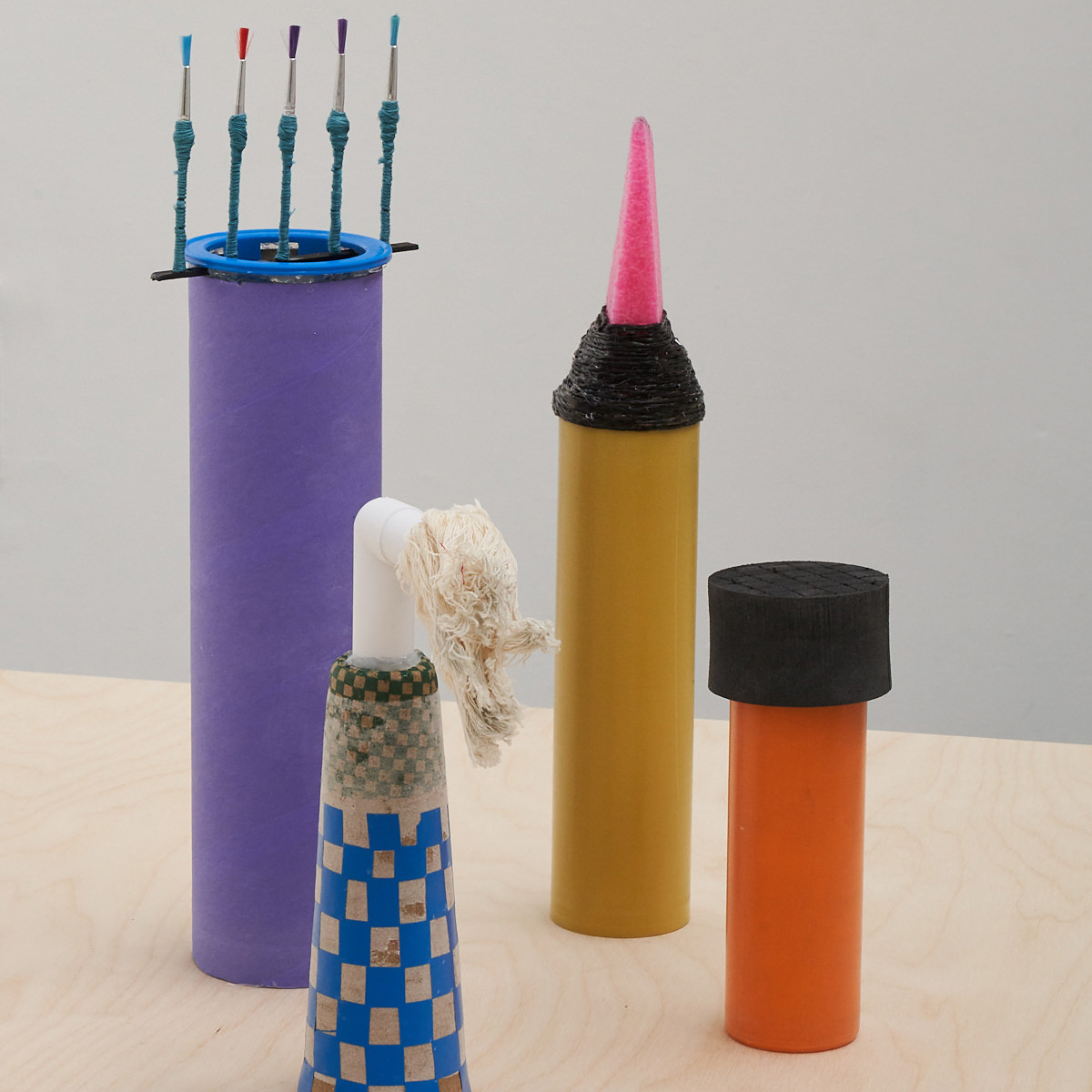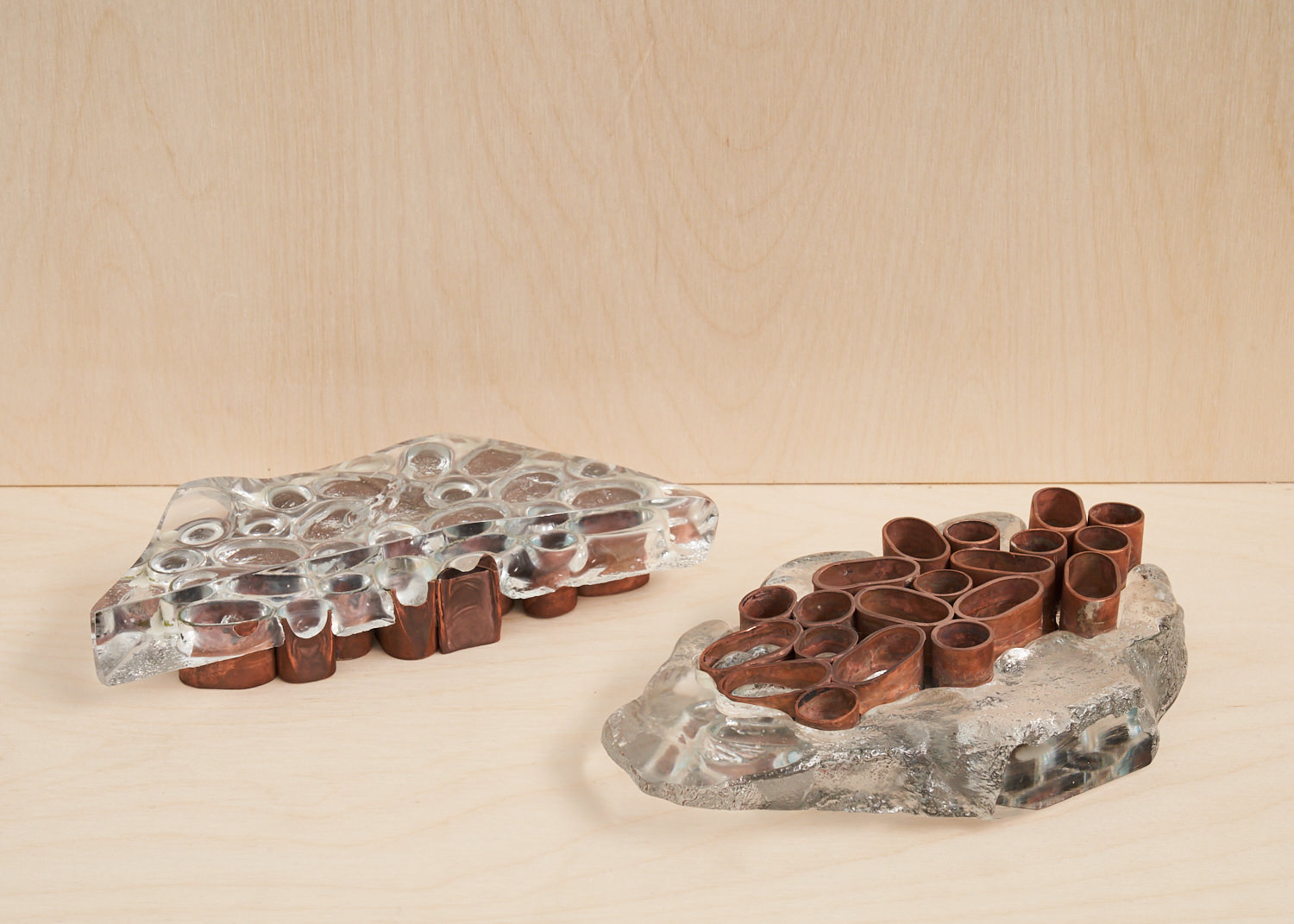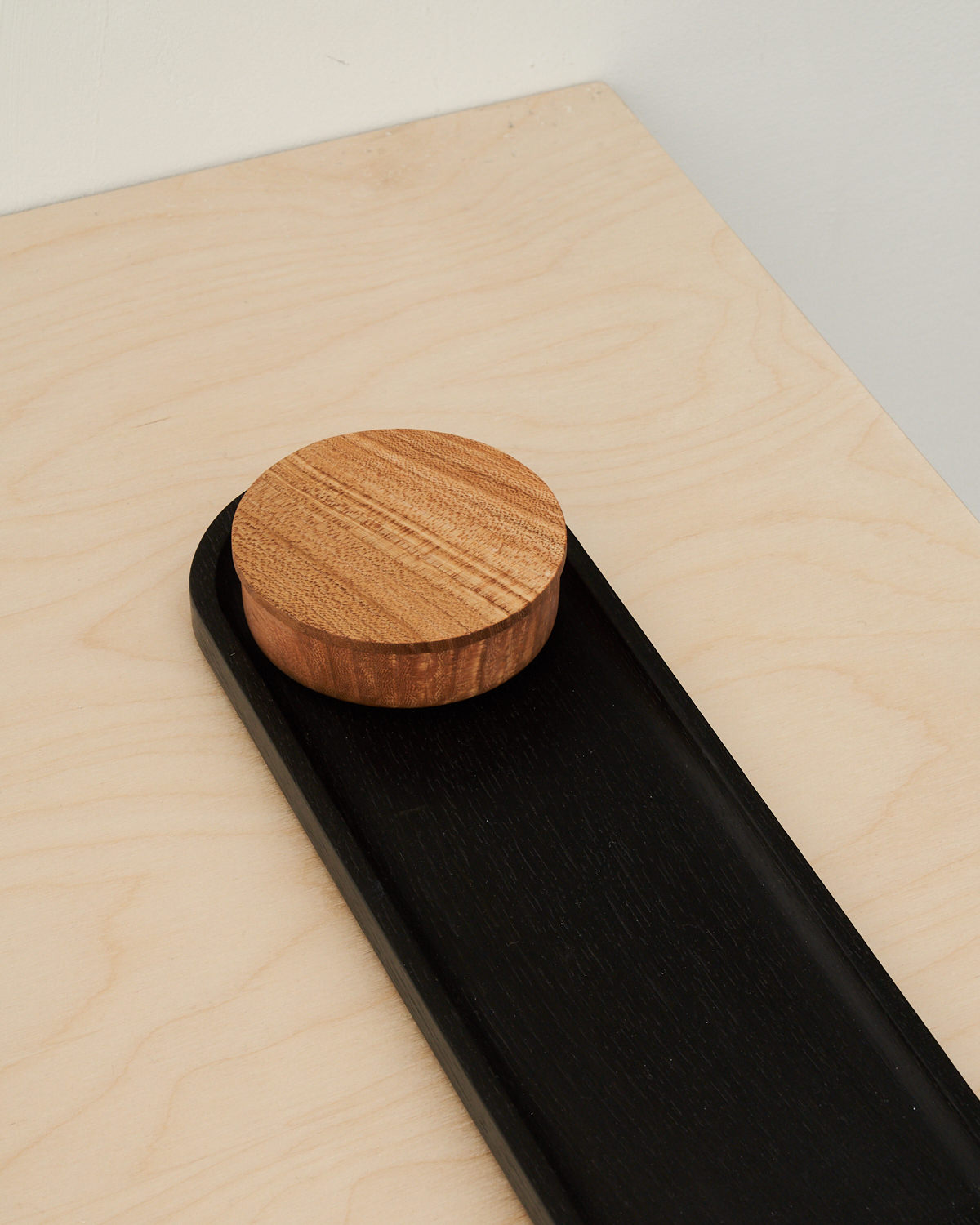objects & conversations
“Makers & Tools was created as a circular conversation with all the makers connected through the exchange of objects. Although some of the makers are not directly linked, something has occurred within this structure so that similarities and connections within the work can be seen.
When I selected the six makers I wanted to represent a range of material disciplines within craft and also a range of approaches to making – practices that are more design/product-focused, that are studio-based, those that are mostly digital or that have a fine-art approach. I was interested in seeing how makers with different material concerns and different perspective on making would affect each other’s practices.
In the display you can explore the relationships between the tools and the objects they inspired, and read elements of the conversations I had with the makers about their creation.” Melody Vaughan, project curator
Tool created by Tim Evershed
“I spent quite a long time trying to distil the idea of what I was going to do, compared to how long I actually spent making it. I settled on the mallet because it’s one of the most simple tools we have. I found that premise quite nice - to work on a tool that can probably be traced back as long as people have been working wood.
The dark wood is bog oak, which is a timber I use on furniture to add a bit of value, to create a point of interest because it’s 5000 years old. It’s been excavated from a peat bog; it’s very dense and dark and mineral rich, which is what causes the blackening over the years. The pale wood is Scottish elm, which is a decorative wood.”
Object Responses created by Katy Welsh
“I knew that I would respond to it more as an object – in the way you would respond to a still life – looking at it, and thinking it through, how it looked, rather than using it to create something.
I did quite a few drawings of the texture on the bog oak and decided I wanted to try to create the texture through print. I found a method which was quite evocative of the wood grain – a simple DIY process. I never use straight lines or a ruler, but I did for this. This chequerboard is so simple but it really shows the texture, the changes of direction, and this led me down the route of playing with geometric patterns.”
Tools created by Katy Welsh
“In my practice, the way I choose a tool, or use it, is based around improvisation. I don’t necessarily view it as making in the way I think of ‘craft making’ - it’s more image-making. So, when I’m choosing a tool it’s something that can create a texture or a mark, mostly that’s purely decorative rather than performing a function. That led me to mark-making tools, and I thought in that sense of improvisation I would use waste materials to create the tools. The way I built them was improvisational; I didn’t go into it with a plan, I just put things together seeing what would work with what. That’s very much how I make – I use what’s to hand – whatever that creates becomes part of the work.”
Object Responses created by Harriet Elkerton
“I knew I wanted to use the tools in line with my practice, to see how they would change it, but the tools that arrived from Katy suggested mark-making, which is very different from what I do. An idea started to come - lovely swooping brush-marks that came from testing the brushes. Things that came out were the fade, and the linear movement and scale. I ended up piping the porcelain slip into moulds. I tried a few different thicknesses and directions, tweaked it, developing it and getting better at what I wanted from the technique, understanding what it will do, up to a point. These objects are suggestive of vessels, but they’re completely decorative now.”
Tools created by Harriet Elkerton
“I went to the Museum of Rural Life in Waterperry to look at the collection of tools for inspiration. At the time I was doing a lot of perforated pieces in my own work, using guides, so measuring things and gauges came up and were the things I was drawn to. I think of these tools like a geometry set. They don’t have a purpose, I kind of like that they gauge random things, but you don’t know what exactly.
In my practice I’ve been torn between functional and non-functional, it’s an area that’s always interested me and I’m always questioning it, and often end up with these things that are in-between.”
Object Responses created by Rachel Jones-Jones
“I was very sure that I didn’t want to use the tools only as some kind of aesthetic starting point - I wanted them to determine a set of rules or a language. I was trying to understand the language that these tools generate. Trying to come up with a way of documenting my thought process, and showing my workings, through the response onto my primary material, which was metal. I wanted to follow the tool, and not make too many decisions. The tool tells me what to do. There’s no tweaking or adding little decorative bits, I wanted the tool to say ‘this is where you are putting the marks’.”
Tools created by Rachel Jones-Jones
“My tools are a response to a tool I use all the time called a Garryf lex block – a rubber block with abrasive particles in it - for cleaning and polishing metal. When they are new they are all perfect with very clear edges. Depending on how you use them, and what you use them for, they acquire a form based on how they are used. I have a drawer full of them, bits break off. I like how they look in the drawer, like primitive tools. I wanted to be quite honest and take directly from what they are. So I cast the bits in resin, using pigment from the metal that the original piece had been used with – the pinky ones I’d been using on copper, the grey ones on aluminium.”
Object Responses created by Angie Packer
“One thing I’ve always liked is the skill involved in cutting into glass with a saw. Almost like a stone carver, people can get such intricate shapes and movement, it’s fascinating. My response involves that, but oh boy have I got a long way to go! It’s not something I’ve done much before, that’s what inspired me. It’s what this project’s about – challenging me, making me think a little bit differently. These objects are made from hot glass, formed with the hands using wet newspaper, rather than blown glass. These forms are morphic and that’s a response to the earthy, natural shapes of Rachel’s tools. I love the way the carved lines change through the glass.”
Tools created by Angie Packer
“The tools I use to create the sculptural element within my glass work, one of them is now precious because it’s so gnarled and weathered by being put in hot glass all the time.
I think it started to come through that I wanted to create something a bit like an artefact, something that had an old feeling to it. While I was thinking about what to make I started to doodle, I usually doodle circles and ovals, and I thought ‘that’s it!’. I didn’t make these tools with a purpose – I couldn’t envisage who would use them or what they would use them for. When I found out they’d gone to Christabel and looking at her work with all those round shapes, I just thought there’s a real connection.”
Object Response created by Christabel Balfour
“I was thinking about how the tools have this raised surface of the copper. I knew I wanted to do something with knots, because you have the surface of the weave and then this raised element. So that’s when I thought of involving tufting. I still didn’t see how I could use the tools in the process of weaving, but I could see them being used in the process of f inishing.
I saw a video of weavers in Nepal where they go over their tufted cloth with scissors and trim them, then they wash them to get rid of the f luff and then lay them out and brush them. It was really exciting to spend a bit more time with a piece after I’d woven it, especially to engage with it almost as sculptural object.”
Tool created by Christabel Balfour
“When I was making I knew I wanted to make a shuttle, which is the tool I use to put the weft through the warp. What I often look for in a shuttle is: Is it nice to hold? Is it comfortable, how does it feel in the hand? And that was what I was thinking about, making something that was just nice to hold, but maybe you couldn’t necessarily be able to work with it.
I was thinking a lot about its sculptural qualities. I spent a lot of time playing around with the composition of the shape – I kind of composed it in the way that I’d compose a geometric form in one of my weavings.”
Object Response created by Tim Evershed
“This exaggerated version of a shuttle felt quite abstract to me, I couldn’t think of a practical application I could use it for. I was drawn to the geometric forms straightaway, this interesting arc that leads onto these straight lines, a nice sharp shape. I was cross-referencing Christabel’s tool with ideas I’ve had that otherwise would be consigned to my sketchbook. As I started to make I thought about how things are held – this box is an object for holding things, it’s also an object that is held. Although it’s made with hand power tools, it’s been hand-f inished. It was nice to try to translate the level of f inish from my furniture onto a smaller object.“
All images by Yeshen Venema












